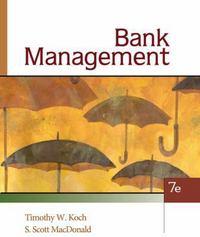Question
1. If a minimum wage law is passed imposing a price floor above the equilibrium price of unskilled labor: the quantity of unskilled labor demanded
1. If a minimum wage law is passed imposing a price floor above the equilibrium price of unskilled labor:
the quantity of unskilled labor demanded will exceed the quantity of unskilled labor supplied.
the demand for unskilled labor will increase.
the quantity of unskilled labor supplied will equal the quantity of unskilled labor demanded.
the quantity of unskilled labor supplied will exceed the quantity of unskilled labor demanded.
2. When firms purposely pay a wage rate higher than their competition, this is called:
Substitution bias
Efficiency wage
Minimum wage
Unemployment insurance
Union bargaining
3. Which of the following groups typically benefits from unexpected inflation?
people holding cash
debtors (borrowers)
people involved with economic development
people on fixed incomes
creditors (lenders)
4. What would happen to the real interest rate if originally the nominal interest rate was 14% and the inflation rate was 10%, then the nominal interest rate fell to 7% as the inflation rate fell to 4%? It would go from:
24% to 11%.
4% to 3%.
11% to 24%.
3% to 4%.
5. The term "CPI" stands for:
Company Profit Index
Consumer Price Index
Cool Professor Index
Congress Profit Indices
6. As inflation increases, purchasing power ______.
remains constant
decreases
increases
falls to zero
7. As a "market basket," the CPI tracks which of the following?
the cost of aging
average household purchases
average production costs
government purchases
the cost of raising children
8. The current-year costs of a market basket of goods is $4,500. The base-year cost is $3,000. What is the Price Level Index for the current year?
67
100
167
150
50
9. Which of the following is the best definition of the minimum-wage rate?
the wage that equalizes the quantity demanded and quantity supplied of labor
a higher wage set in order to improve productivity
an hourly wage floor set above the equilibrium wage
a wage set through collective bargaining by unions and employers
10. Which of the following is true?
At the natural rate of unemployment, the economy is considered to be at full employment.
All of the above are true.
At full employment, the economy is producing at its potential output.
If unemployment is higher than its natural rate, the economy is producing at less than its potential output.
If we are at less than full employment, some cyclical unemployment exists.
Step by Step Solution
There are 3 Steps involved in it
Step: 1

Get Instant Access to Expert-Tailored Solutions
See step-by-step solutions with expert insights and AI powered tools for academic success
Step: 2

Step: 3

Ace Your Homework with AI
Get the answers you need in no time with our AI-driven, step-by-step assistance
Get Started


